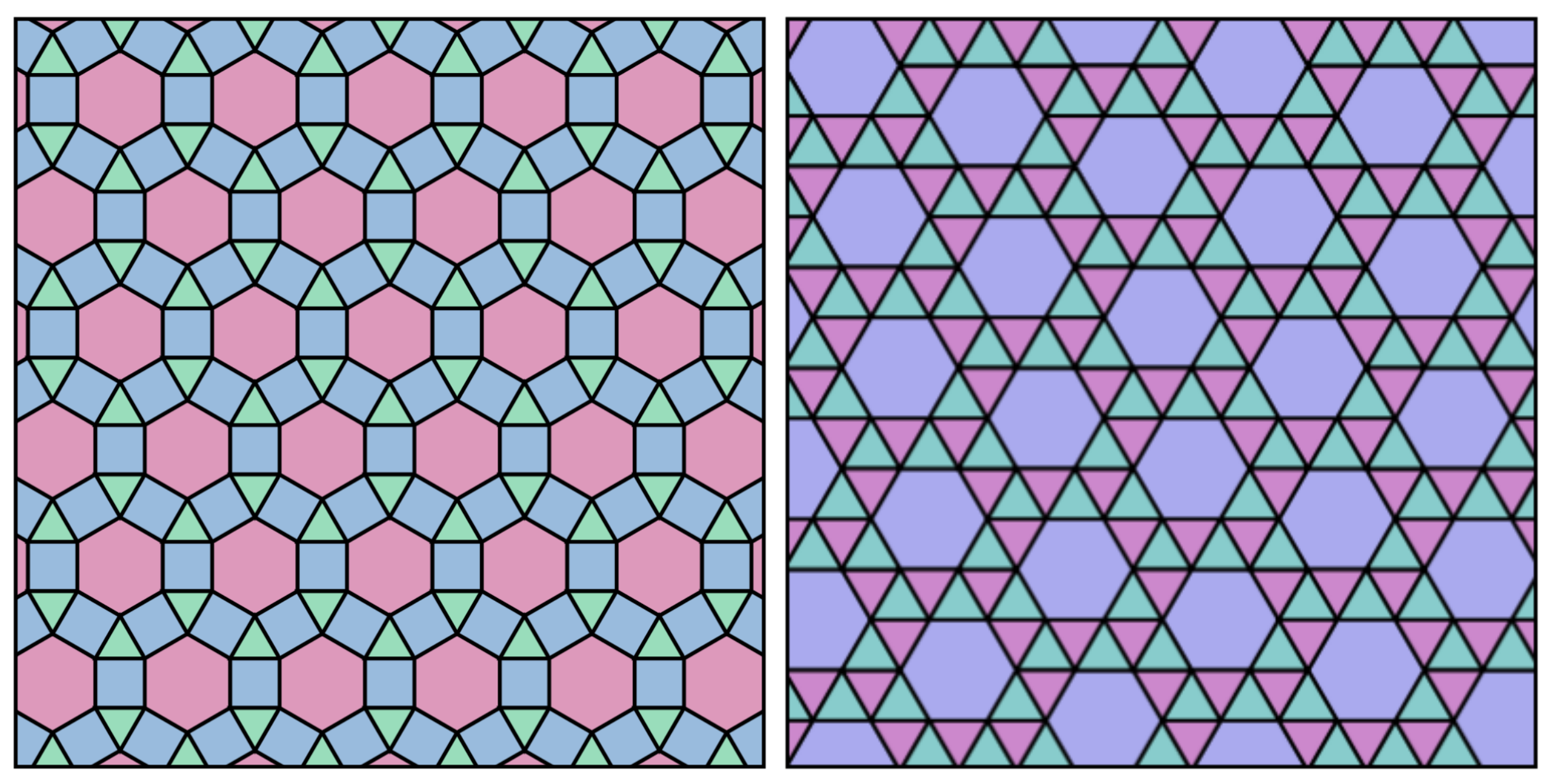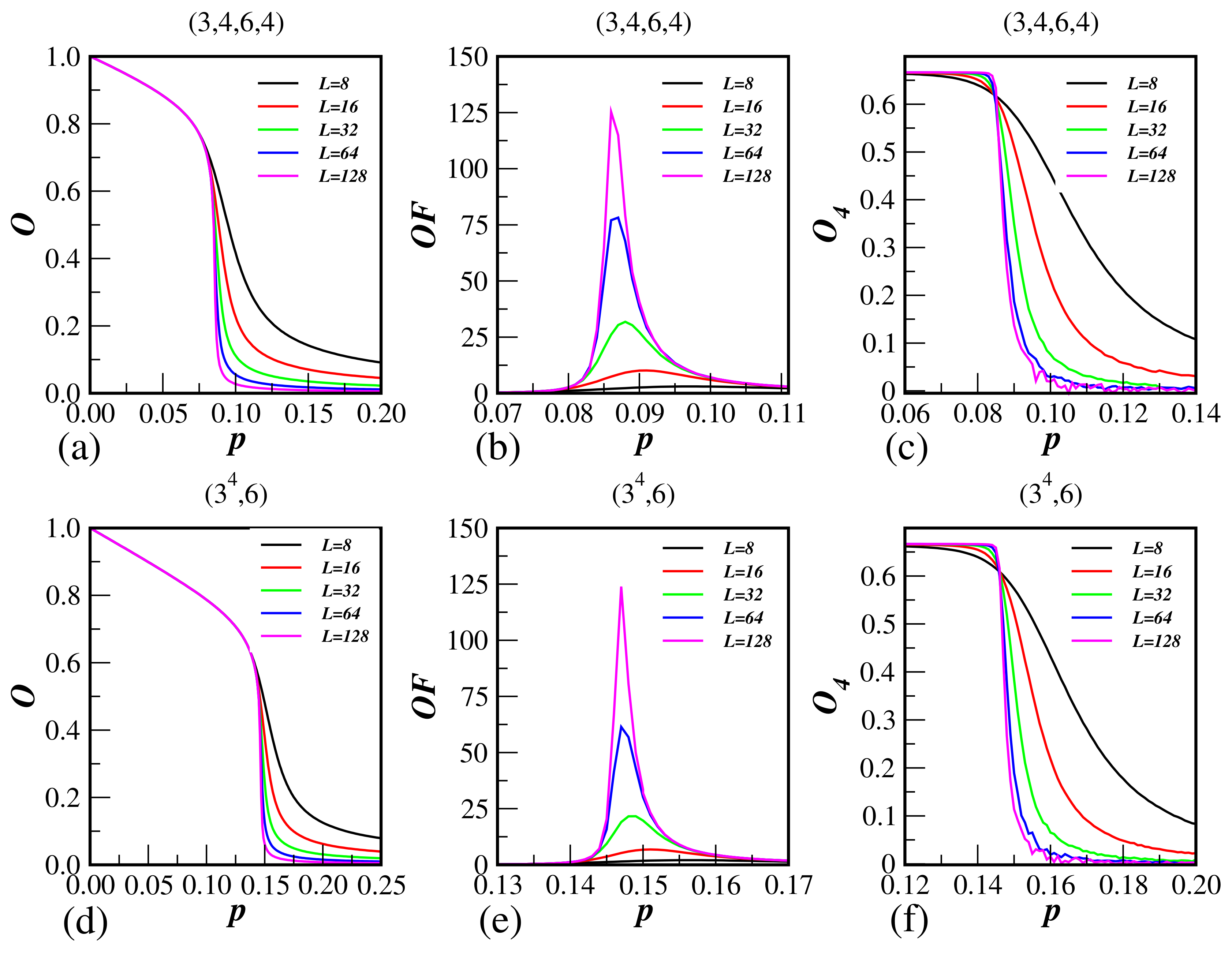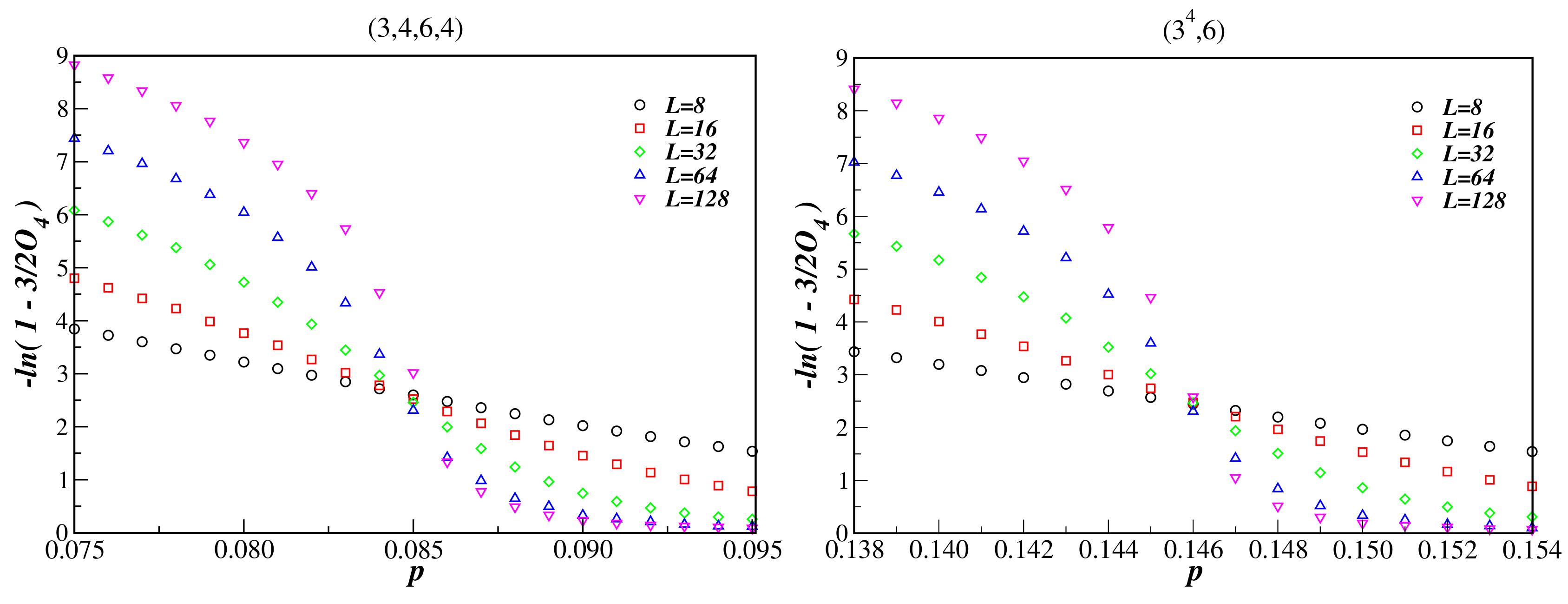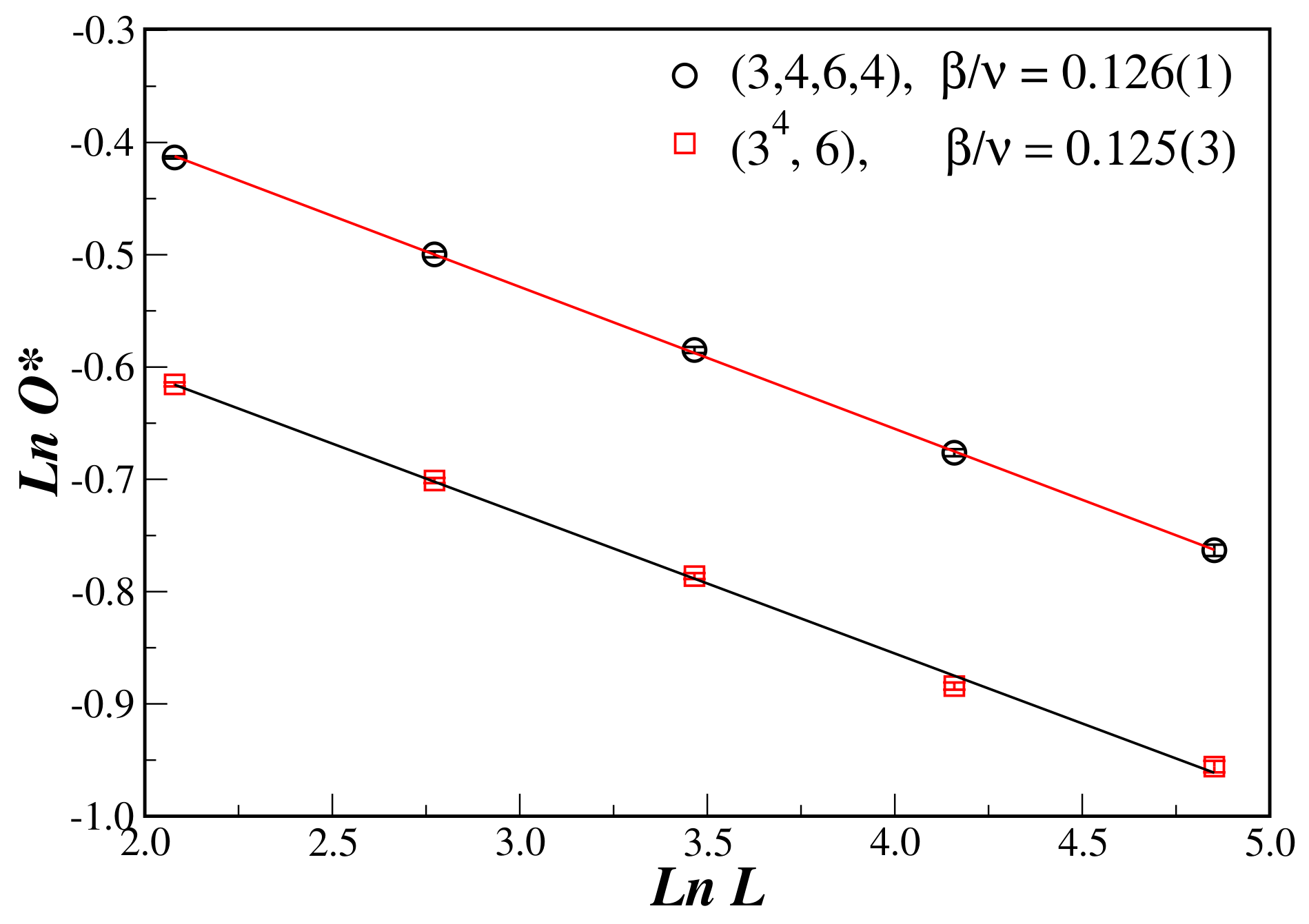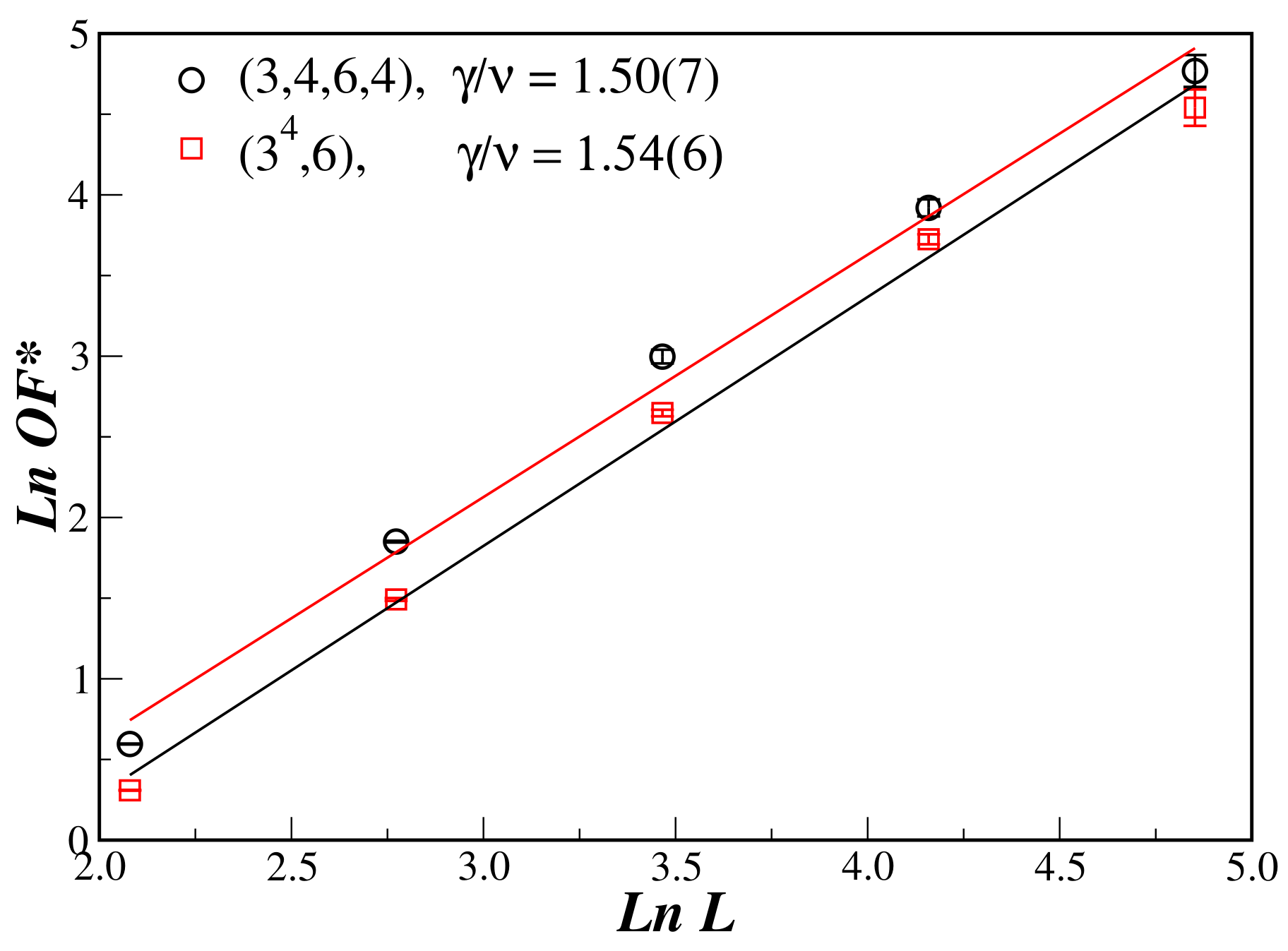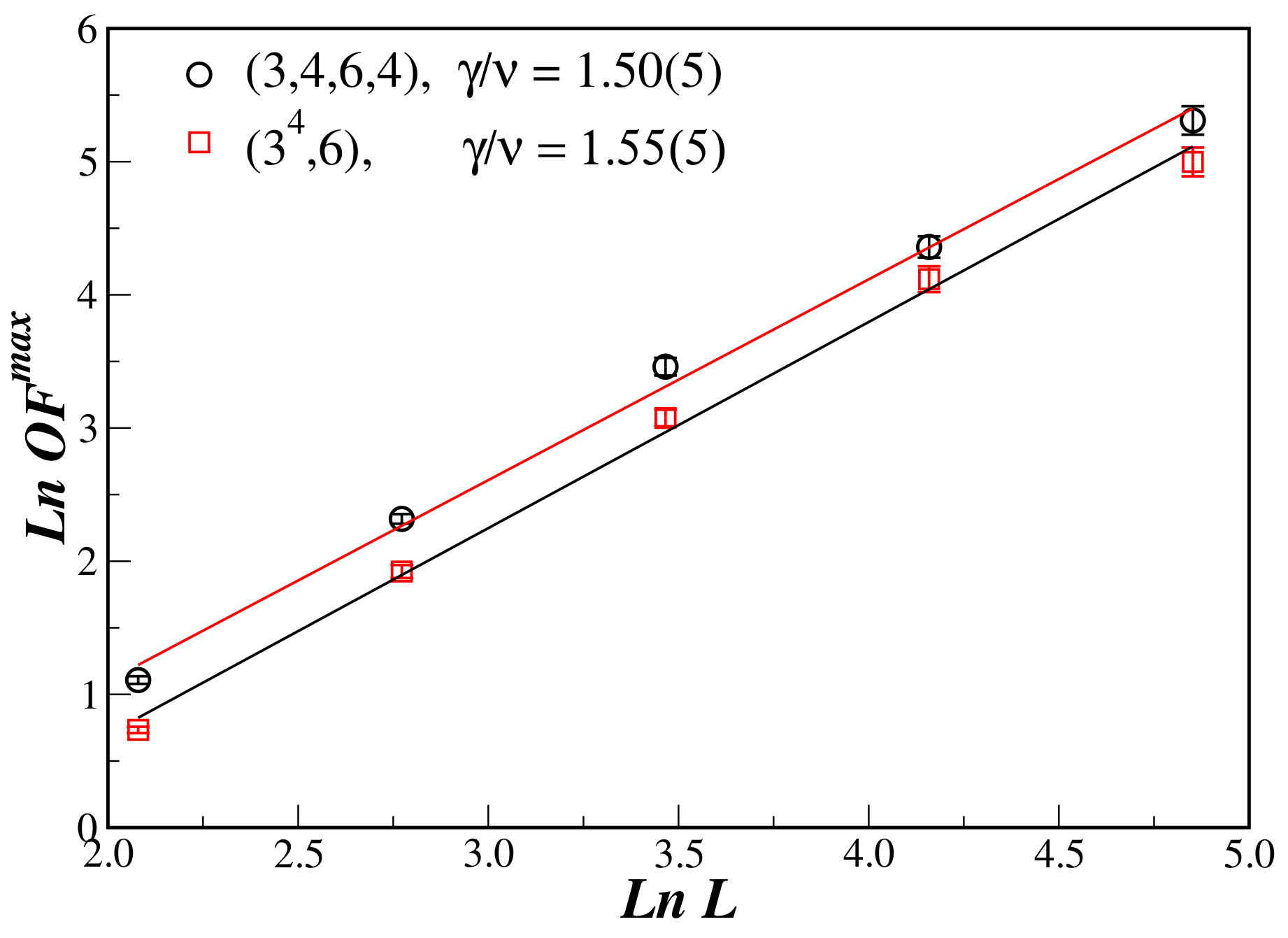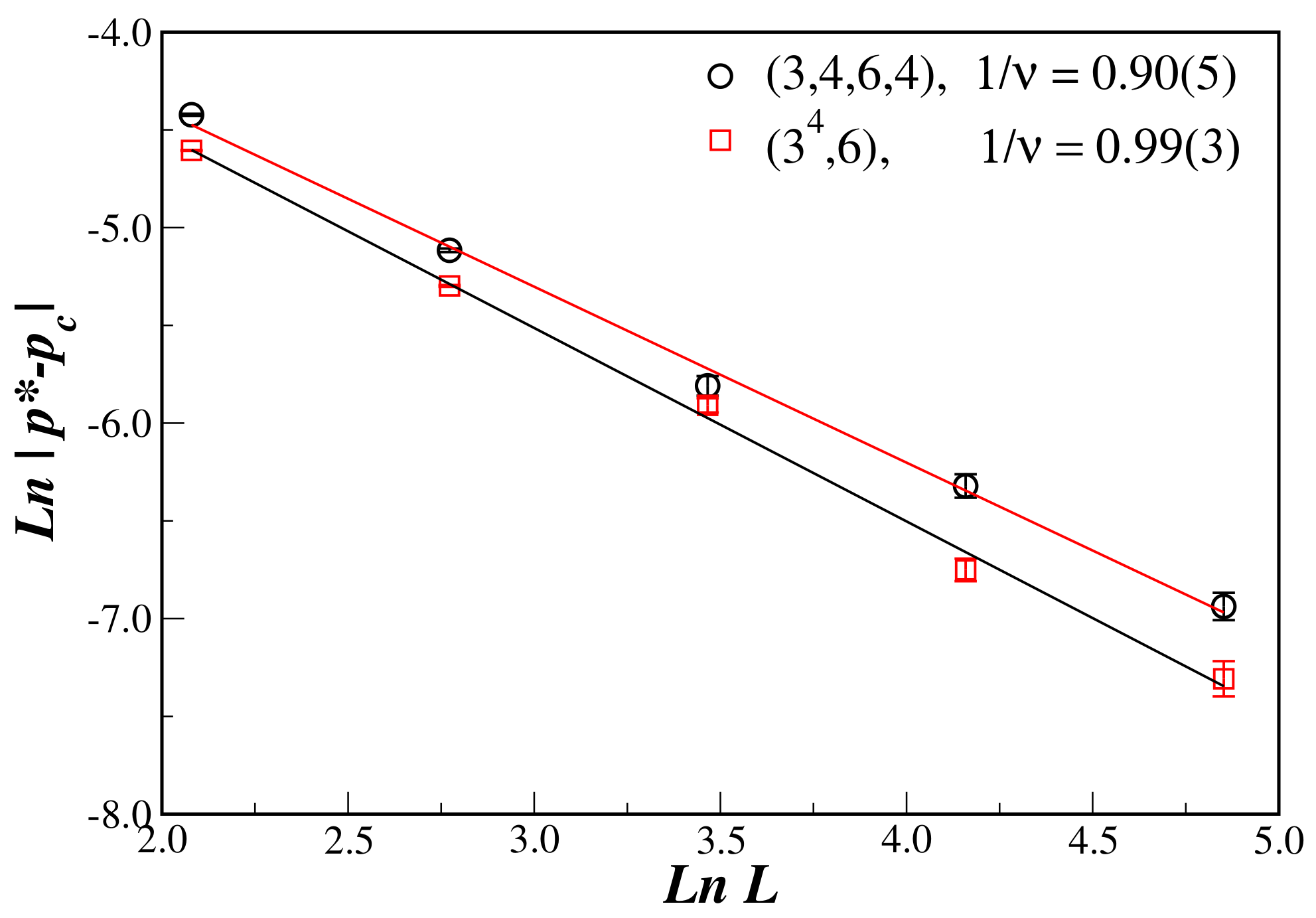1. Introduction
The study of the behavior of individuals in a society by physicists is known as sociophysics, having as the main contributor in this new research area Serge Galam who introduced the use of local majority rules to study voting systems as bottom-up democratic voting in hierarchical structures [
1,
2,
3,
4]. Although sociophysics was rejected by some physicists in the eighties [
5], it has today become an active field of research among physicists all over the world [
3,
6,
7].
In this same context and based on the criterion of Grinstein et al. [
8] (where a nonequilibrium model presenting up–down symmetry in two-state dynamic systems implies the same critical behavior (same universality class) as the equilibrium Ising model), Oliveira [
9] proposed a nonequilibrium version of Ising model called majority vote model (MVM). On two-dimensional regular lattices, this presents a second-order phase transition with critical exponents
,
,
, as for [
10,
11] the equilibrium Ising model [
12,
13].
Lima and Malarz [
14] studied the MVM on (
) and (
) Archimedean lattices (ALs). On these lattices, they found a second-order phase transition with exponent ratios
,
,
for (
) and
,
,
for (
), see
Table 1.
A multiagent model for opinion formation in society by modifying kinetic exchange dynamics studied in the context of income, money, or wealth distributions in a society where a spontaneous symmetry-breaking transition to polarized opinion states starting from nonpolarized opinion states was proposed by M. Lallouache et al. [
15].
A model of continuous opinion dynamics (KCOD) was proposed by Biswas et al. [
16] in 2012. In the KCOD model, the mutual interactions can be both positive and negative and a single parameter
p denoting the fraction of negative interactions was considered in order to characterize the different types of distributions for the mutual interactions. Numerical simulations of the continuous version of this model indicate the existence of a universal continuous phase transition at
with exponents of mean field (
,
, and
) (see also [
17]).
The KCOD model on square and cubic lattices (2D and 3D) was studied by Mukherjee and Chatterjee [
19]. Their numerical results indicate that the critical behavior of the KCOD model is the same as that of the Ising model in the corresponding dimensions.
Recently, C. Anteneodo and N. Crokidakis [
20] studied a model of like KCOD model in the presence of a social temperature. The critical behavior of this model showed three different kinds of collective states (symmetric, asymmetric, and neutral) and nonequilibrium transitions between them (see also [
21,
22]).
In this work, we studied the KCOD on two Archimedean lattices—namely,
and
—through extensive Monte Carlo simulations. The topologies of
, and
AL are presented in
Figure 1. The AL are vertex transitive graphs that can be embedded in a plane such that every face is a regular polygon. Kepler showed that there are exactly eleven such graphs. The AL are labeled according to the sizes of faces incident to a given vertex. The face sizes are sorted, starting from the face for which the list is the smallest in lexicographical order. In this way, the square lattice gets the name
(abbreviated to
), honeycomb is called
, and Kagome is
. Here, we also compared our results with those of the MVM made on
and
AL.
2. Model and Simulations
The KCOD [
16] model is defined as follows: A set of agents (individuals) with continuous opinion variables
is situated on every node of the (
) and (
) AL with
sites. The opinion of an individual
i at time
t takes the values in the range
, in a system of
N agents. Here, the opinions change out of pair-wise interactions via mutual influences/couplings
as:
where the
interactions are pair-wise interactions between nearest neighbors, which implies no sum over the index
j, and
are real random variables. In the above dynamics (Equation (
1)), an agent
i updates his opinion by interacting with agent
j and is influenced by the mutual influence term
. Here,
j is selected randomly from one of the nearest neighbors. Unlike other models (such as Ising model and MVM) that present up–down symmetry [
23], in the KCOD model the opinions are bounded (i.e.,
). If the opinion value of an agent becomes higher (lower) than +1 (−1), then it is made equal to +1 (−1) to preserve this bound. This bound, along with Equation (
1), defines the dynamics of the model. Here,
is a continuous random variable defined in the range [−1, +1]. The ordering in the system is measured by the quantity
, the average opinion. Changing the fraction
p of negative interactions, one can observe a symmetry breaking transition between an ordered and a disordered phase below a particular value
of the parameter
p, the system orders (giving a non-zero, finite value of the order parameter
O (opinion), defined in the following), while a disordered phase exists above
(
).
To study the critical behavior of the model, we are interested in the average opinion
O, order parameter fluctuations
OF, and the reduced fourth-order cumulant of the
O (herein named as
O4), defined as
where
stands for time averages, computed at the steady states. The results are averaged over the
independent simulations.
The above-mentioned quantities are functions of the disorder parameter
p, and obey the finite-size scaling relations
where
,
, and
are the usual critical exponents,
are the finite-size scaling functions with
being the scaling variable. Therefore, from the size dependence of
O and
OF, we obtained the exponent ratios
(
O) and
(
OF). The maximum value of susceptibility also scales as
. Moreover, the value of
for which
OF has a maximum is expected to scale with the system size as
Therefore, the relations (3c) and (4) may be used to get the exponent
. We also evaluate the effective dimensionality,
, from the hyperscaling hypothesis
Monte Carlo simulations were performed on and () AL with various systems of size 384, 1536, 6144, 24, 576, and 98, 304 for and AL. It takes Monte Carlo steps (MCS) to let the system reach the steady state, and then the time averages are calculated over the next MCS. One MCS is accomplished after N attempts to update the opinions of agents i and j, considering the evolution Equations (1) and (2). The results are averaged over independent simulation runs for each lattice and for given set of parameters .
3. Results and Discussion
In all simulations described in the previous section, we used sequential Monte Carlo steps and considered continuous values within the interval [−1,+1]. Here, we only discuss the case when are annealed (i.e., they change with time).
Figure 2 displays the dependence of the opinion
O,
OF, and
O4 on the disorder parameter
p, obtained from simulations on
and
AL with
L ranging from
to
. The shape of
,
, and
curves for a given value of
L indicate the occurrence of a second-order phase transition in the system. The phase transition occurs at the value of the critical disorder parameter
. This critical disorder parameter
is estimated as the point where the curves of the Binder cumulant
for different system sizes
N intercept each other [
24]. The corresponding value of
is represented by
. Then, we obtained
and
;
and
for
, and
AL, respectively.
To make the critical point on the
x-axis more qualitatively visible than the traditional plot of
(
y-axis),
Figure 3 displays the dependence of
instead dependence of
of the disorder parameter
p, obtained from simulations on
and
AL.
In
Figure 4, we plot the opinion
vs.
L. The fits of the curves correspond to the exponent ratio
according to relation Equation (3a); see
Table 2.
The
Figure 5 displays the log-log plot of the
at
as a function of the lattice size
L. The slopes of curves correspond to the exponent ratio
according to Equation (3b). The numerical estimates are
for
and
for
AL.
In
Figure 6 we present the exponent ratios
at
as
for
and
for
AL.
In
Figure 7, we used the scaling relation Equation (
4) and obtained the exponent ratio
. The calculated values of the exponent
are in
Table 2.
In
Figure 8a,d we plot
versus
using the critical exponent ratios
,
, and
and
for
and
. In
Figure 8b,e we plot
versus
using the critical exponent ratios
and
and
and
for
and
. In
Figure 8c,f we plot
versus
using the critical exponent
and
for
and
. The excellent curve collapse for distinct system sizes corroborates our estimated values for
and exponent ratios
,
, and
.
The resulting critical exponents and disorder parameters are collected in
Table 2. One can also see that the exponent ratios
,
,
are very close to MVM (
Table 1), as expected by Grinstein criterion for regular lattices [
8]. They are different from
obtained for a regular
Ising model, but obey hyperscaling relation (within the error bars). Equation (
5) yields effective dimensionality of systems
for
and
for
. The KCOD on those two AL has the effective dimensionality close to MVM for
(
) and for
(
) AL (see
Table 1 and
Table 2). The results of simulations are collected in
Table 2.
4. Conclusions
We studied a nonequilibrium KCOD model through extensive Monte Carlo simulations on and AL. On these lattices, the KCOD shows a second-order phase transition. Our Monte Carlo simulations suggest that the effective dimensionality is close to two; i.e., that hyperscaling relation may be valid.
Finally, we remark that the critical exponents
,
, and
for KCOD on
and
AL are very close to the MVM model on
and
AL [
14] (see
Table 1 and
Table 2). Therefore, the exponent ratio
and
differs from 2D Ising model while
and
for MVM is a weak indication and
for KCOD is a strong indication for Ising. Therefore, the KCOD model does not belong to the Ising universality class [
12,
18]. Thus, our results agree partially with Grinstein.
